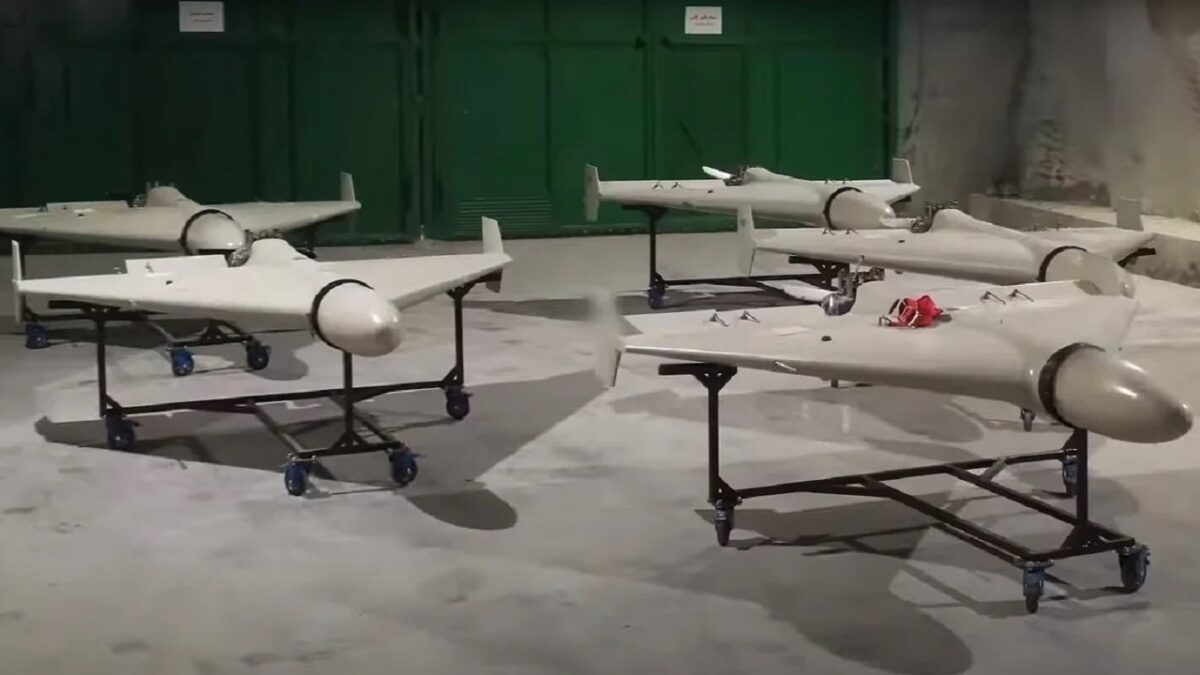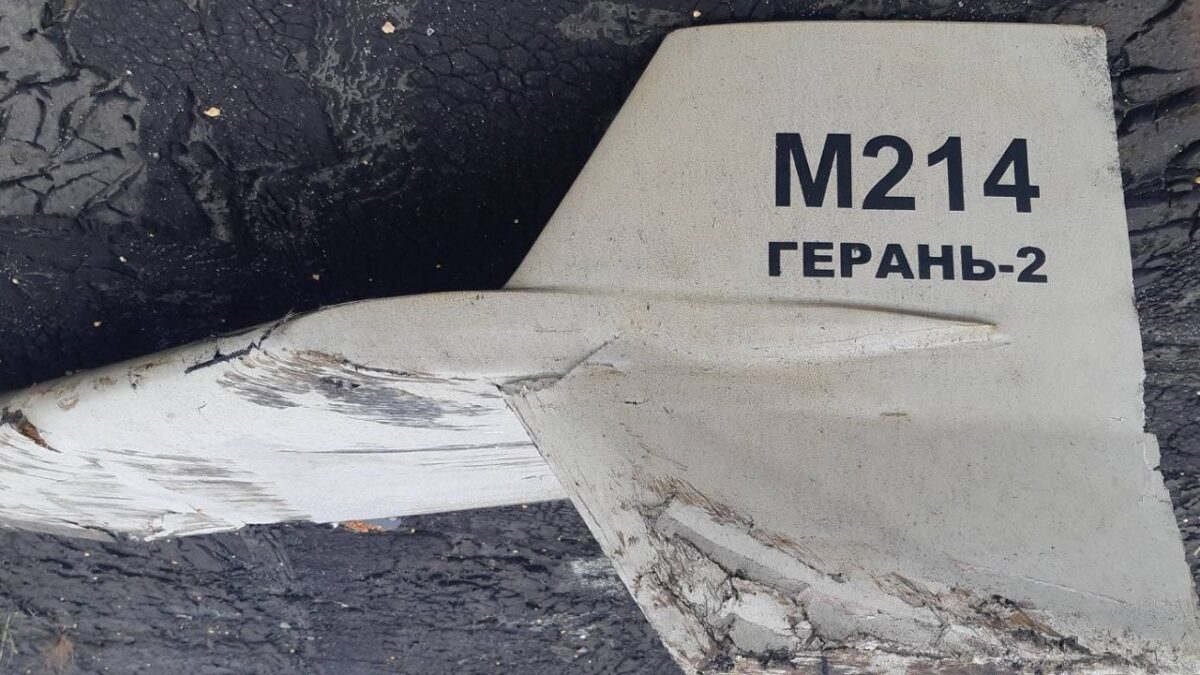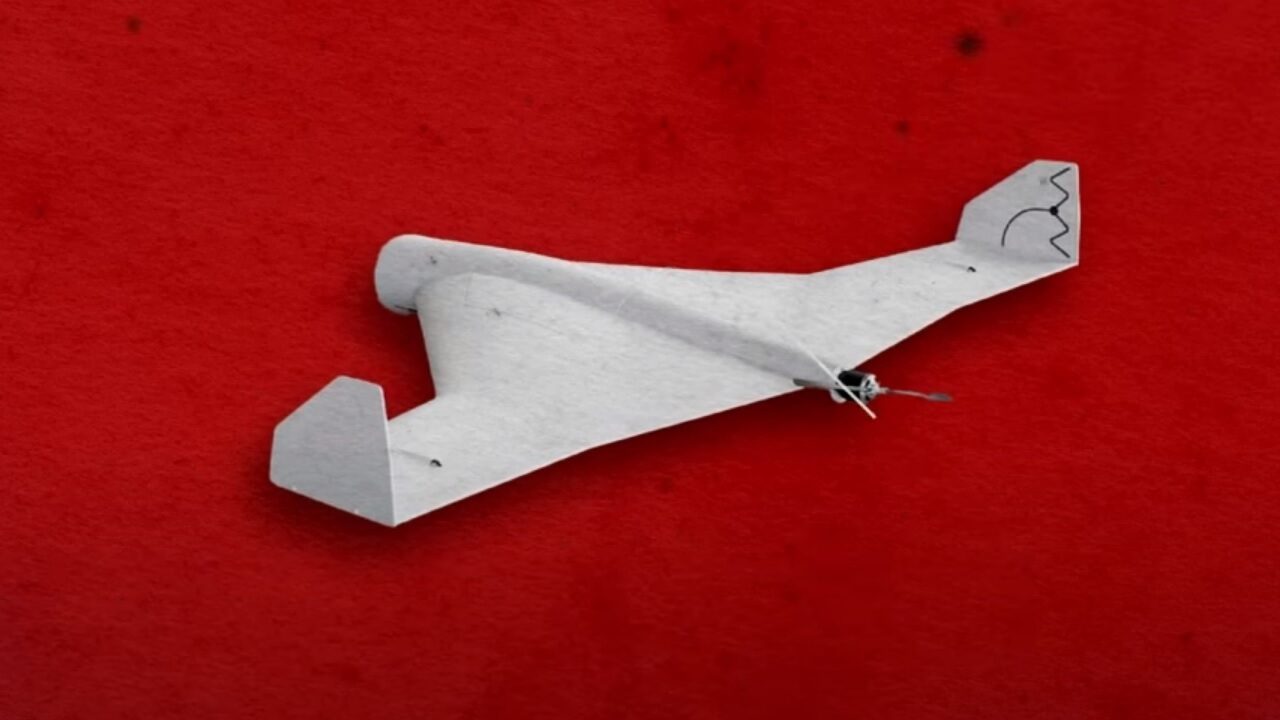Iranian drones are enabling Russian President Vladimir Putin’s war of aggression in Ukraine.

Shahed-136. Image Credit: Screenshot.
Over the past few days, the Russian military launched a missile barrage not seen since the opening weeks of the war when Moscow tried to bend the Ukrainian will to fight. In this instance, the long-range strikes were in response to the partial destruction of the Kerch Bridge that connects annexed Crimea with Russia.
But in addition to the hundreds of ballistic and cruise missiles that the Russian military launched against urban centers and critical infrastructure across Ukraine, Moscow used on a mass scale the unmanned aerial systems that it has received from Iran.
Iranian Drones to Russia
Back in the summer, the U.S. came out with intelligence that suggested that the Kremlin had gone to Tehran looking to buy weapon systems to use in the war in Ukraine.
At the time, U.S. National Security Adviser Jake Sullivan had said that Moscow and Tehran were working on an agreement for the training of Russian troops on how to use the Iranian unmanned aerial systems.
“Our information indicates that the Iranian government is preparing to provide Russia with up to several hundred UAVs, including weapons-capable UAVs, on an expedited timeline,” a National Security Council spokesperson had said.
The U.S. Intelligence Community had assessed that Iran was going to train the Russian military on how to use the drones, most likely in Russia.
Now we know that the U.S. intelligence was accurate and that Russia has received hundreds of unmanned aerial systems from Tehran.
Iranian Drones Over Ukraine
Over the last 30 days of war, the Ukrainian military had successfully intercepted and shot down approximately 230 Iranian unmanned aerial systems, including the Shahed-136 loitering munitions that were provided to Russia by Iran.
“The October 17 drone attack on residential infrastructure in Kyiv is consistent with the broader pattern of Russian forces prioritizing creating psychological terror effects on Ukraine over achieving tangible battlefield effects,” the Institute for the Study of War assessed in a recent operational update on the conflict.
Moreover, according to U.S. officials, the Iranian Islamic Revolutionary Guard Corps (IRGC) has deployed trainers in annexed Crimea in order to train the Russian military on how to operate the drones Moscow purchased back in the summer.
However, there is some uncertainty with regard to how “practical” the training is. Reports are unclear whether it is the Iranians who are operating some or all of the unmanned aerial systems or if they are teaching the Russians how to fly them.
Much like other Russian tactics in Ukraine, the employment of the Iranian drones, especially the Shahed-136 loitering munitions, is intended to have more of a psychological effect on the battlefield (but also on the domestic Russian front) rather than actually serving a tactical or operational objective.
In response to the use of Iranian drones to attack Ukrainian cities, the European Union will impose sanctions on Iran. Meanwhile, Iran intends to send more weapon systems to Russia.
Iranian Drone Program
It is not widely known or acknowledged, but the Iranian military has one of the oldest unmanned aerial systems programs in the world, with initial work on drones beginning as far back as the 1980s.

Shahed-136. Image Credit: Social Media.
The modern Iranian unmanned aerial systems arsenal includes drones capable of conducting both intelligence, surveillance, and reconnaissance (ISR) and strike missions, with some unmanned aerial systems having the ability to dual-hat and do both simultaneously.
Expert Biography: A 19FortyFive Defense and National Security Columnist, Stavros Atlamazoglou is a seasoned defense journalist specializing in special operations, a Hellenic Army veteran (national service with the 575th Marine Battalion and Army HQ), and a Johns Hopkins University graduate. His work has been featured in Business Insider, Sandboxx, and SOFREP.

